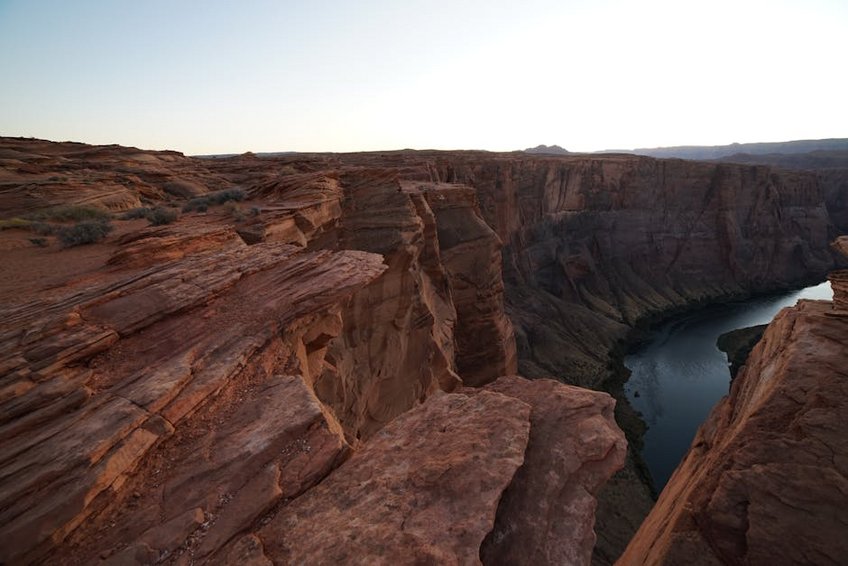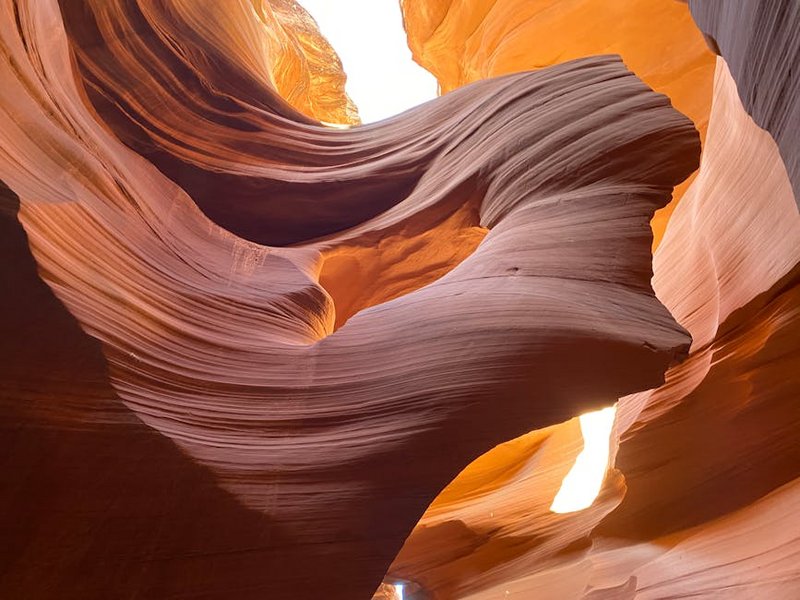Arizona Antelope Canyon: Your Complete Guide to Visiting the Slotted Marvel
Carved by wind and water over millions of years, Arizona Antelope Canyon represents one of the most spectacular natural wonders in the American Southwest. This iconic slot canyon, located on Navajo land near Page, Arizona, draws photographers and adventure seekers from around the globe with its wave-like sandstone walls and mesmerizing light beams. Visiting Antelope Canyon isn’t just a trip—it’s an experience that connects you with the powerful forces of nature and the rich cultural heritage of the Navajo people. You’ll need to plan carefully, as access is strictly controlled through guided tours, but the reward is witnessing one of the most photogenic landscapes on Earth. Whether you’re an avid photographer chasing the perfect light beam or a traveler seeking awe-inspiring beauty, this guide will help you navigate everything from booking tours to capturing unforgettable memories in this geological masterpiece.
Arizona Antelope Canyon Essential Information – What Every Traveler Must Know
Before you embark on your journey to Antelope Canyon, understanding the basic logistics will ensure a smooth and enjoyable experience. The canyon is divided into two main sections—Upper Antelope Canyon (The Crack) and Lower Antelope Canyon (The Corkscrew)—each offering distinct experiences. Upper Antelope is more popular for its light beams and requires less physical effort, while Lower Antelope involves climbing ladders and offers a more adventurous exploration. Both sections are located within the Navajo Nation, which means you’ll need to book tours through authorized Navajo guides—no independent exploration is permitted. The best time to visit depends on your priorities: summer months (May-August) offer the famous light beams, while shoulder seasons (April, September, October) provide milder temperatures and smaller crowds. Remember that this is a sacred site to the Navajo people, so respectful behavior and following guide instructions are non-negotiable aspects of your visit.
Upper vs Lower Antelope Canyon – Choosing Your Experience
- Upper Antelope Canyon (The Crack): Features ground-level entry, requires minimal physical effort, famous for summer light beams (11 AM-1 PM peak), more crowded, higher tour prices ($80-100 per person)
- Lower Antelope Canyon (The Corkscrew): Involves climbing metal stairs and ladders, less crowded, more adventure-oriented, better for photography throughout the day, slightly lower prices ($50-80 per person)
- Combination Tours: Some operators offer both canyons in one package (4-5 hours, $120-150), ideal for photographers and those with limited time in Page
- Budget Traveler: $50-70 for Lower Antelope tour, $15-20 for lunch, $80-100 for budget accommodation = $145-190 per day
- Mid-Range Traveler: $80-100 for Upper Antelope photography tour, $30-40 for meals, $150-200 for comfortable hotel = $260-340 per day
- Luxury Experience: $150-200 for private guided tour, $60-80 for fine dining, $250-400 for luxury resort = $460-680 per day
- Navajo Nation Parks and Recreation Department
- National Park Service – Glen Canyon National Recreation Area
Navajo Nation Regulations and Cultural Respect – Key Details
Since Antelope Canyon sits on Navajo land, visitors must adhere to specific rules and cultural protocols. All tours must be booked through authorized Navajo guide companies—you cannot enter independently. Your guides will share cultural stories and geological information, providing context that enhances the experience significantly. Photography restrictions apply: tripods require special permits (additional $20-50 fee), and commercial photography needs advanced authorization. The Navajo people consider the canyon sacred, so speaking quietly, not touching the walls unnecessarily, and following the “leave no trace” principle are essential. During monsoon season (July-September), tours may be cancelled suddenly due to flash flood risks—always have flexible plans and travel insurance that covers weather disruptions.

Arizona Antelope Canyon Planning Your Trip – Seasons, Budget, and Preparation
Strategic planning transforms a good Antelope Canyon visit into an extraordinary one. The canyon’s appearance changes dramatically throughout the day and across seasons, making timing your visit crucial for the experience you desire. Summer months (June-August) deliver the famous light beams but also bring extreme heat (100°F+/38°C+) and maximum crowds. Spring (March-May) and fall (September-November) offer pleasant temperatures (60-80°F/15-27°C) and thinner crowds, though light beams are less predictable. Winter (December-February) provides solitude and unique photographic opportunities with softer light, though temperatures can drop below freezing. Regardless of when you visit, booking tours 2-3 months in advance is essential, especially for premium photography time slots. Page, Arizona serves as your basecamp, offering accommodation ranging from budget motels to luxury resorts, with numerous dining options to fuel your adventure.
Best Time to Visit Antelope Canyon
For photographers seeking the legendary light beams, visit between late March and early October, with peak conditions occurring around noon during summer months. The sun must be high enough to penetrate the narrow canyon opening, creating those magical shafts of light that make Antelope Canyon famous. Mid-June through July offers the most reliable light beams, but also the largest crowds and highest temperatures. If you prefer comfortable weather and smaller groups, April-May and September-October provide ideal conditions with temperatures ranging from 65-85°F (18-29°C). Winter visitors (November-February) experience fewer than 20% of summer crowd levels, though the light is softer and more diffused—perfect for moody photography without the harsh shadows. Remember that monsoon season (July-September) brings flash flood risks that can cancel tours with little notice.
Budget Planning and Costs for Antelope Canyon
Essential Preparation Checklist for Antelope Canyon
Packing appropriately ensures comfort and safety during your Antelope Canyon adventure. Wear closed-toe shoes with good grip—the sandstone can be slippery, and Lower Antelope requires navigating metal stairs and ladders. Light layers work best: temperatures inside the canyon can be 10-15°F (5-8°C) cooler than outside, but you’ll appreciate breathable clothing during the hike to the entrance. Bring water—most tours last 1.5-2 hours with no water available inside the canyon. Photography enthusiasts should pack a wide-angle lens (10-24mm ideal), polarizing filter to reduce sandstone glare, and extra memory cards. For those sensitive to dust, consider a light face covering or mask—fine sand particles often swirl through the canyon. Finally, carry cash for tips (guides typically receive $5-10 per person) and any last-minute souvenir purchases from Navajo artisans at the tour meeting points.
Arizona Antelope Canyon Top Attractions and Activities – Beyond the Main Canyon
While Antelope Canyon itself is the star attraction, the Page, Arizona area offers numerous complementary experiences that enhance your Southwest adventure. Horseshoe Bend, located just 15 minutes from Antelope Canyon, provides that iconic Colorado River vista you’ve seen in countless photographs—time your visit for sunrise or sunset to avoid crowds and capture magical light. Lake Powell, with its stunning blue waters contrasting against red rock formations, offers boat tours, kayaking, and swimming opportunities during warmer months. For photography enthusiasts, nearby slot canyons like Canyon X or Mountain Sheep Canyon provide similar geological formations with fewer restrictions and smaller groups. The Navajo Village Heritage Center offers cultural immersion experiences, including traditional dances, storytelling, and craft demonstrations that deepen your understanding of the region’s indigenous heritage. Combining these activities creates a well-rounded Arizona itinerary that balances natural wonders with cultural education.
Must-See Highlights Around Page, Arizona
Horseshoe Bend undoubtedly tops the list of complementary attractions—this spectacular 1,000-foot (305-meter) deep bend in the Colorado River requires a 1.5-mile (2.4 km) roundtrip hike from the parking area but rewards with one of the most photographed vistas in the American Southwest. Arrive before 9 AM or after 4 PM to avoid the harsh midday sun and largest crowds. Lake Powell, the second-largest man-made reservoir in the United States, offers numerous recreational opportunities—consider a half-day kayak tour to Antelope Canyon’s water entrance or a scenic boat cruise to Rainbow Bridge National Monument. Glen Canyon Dam, located between Antelope Canyon and Horseshoe Bend, provides free tours that explore the engineering marvel that created Lake Powell. For a unique perspective, take a flightseeing tour from Page Airport that offers aerial views of all these landmarks—especially stunning during golden hour.
Hidden Gems and Local Favorites Near Antelope Canyon
Venture beyond the obvious attractions to discover Page’s lesser-known wonders that locals cherish. The Hanging Garden Trail offers an easy 1-mile (1.6 km) roundtrip hike to a delicate ecosystem where water seeps from the Navajo Sandstone, supporting ferns and wildflowers—particularly magical after rare rainfalls. For a truly unique experience, join a stargazing tour—the remote desert location provides minimal light pollution, creating incredible Milky Way visibility from April through October. The Page Rim Trail system offers 10 miles (16 km) of mountain biking and hiking routes with panoramic views of Lake Powell, Glen Canyon, and the surrounding desert. Local Navajo guides sometimes offer custom tours to less-visited slot canyons like Owl Canyon or Rattlesnake Canyon, which provide similar beauty to Antelope without the crowds. Finally, don’t miss the chance to sample authentic Navajo tacos at local eateries—a delicious cultural experience that supports the community.
Arizona Antelope Canyon Practical Travel Information – Transportation, Accommodation, and Logistics
Reaching Antelope Canyon requires some logistical planning, as it’s located in a relatively remote area of northern Arizona. Page, Arizona (population approximately 7,500) serves as the gateway town, offering all necessary services including hotels, restaurants, grocery stores, and tour companies. The closest major airports are in Las Vegas (McCaran International – 4.5-hour drive) and Phoenix (Sky Harbor International – 4-hour drive), with Page Municipal Airport offering limited connecting flights from Phoenix. Once in Page, having a rental car provides flexibility to explore the region, though most tour companies offer pickup from local hotels. The summer heat demands careful hydration planning—always carry more water than you think you’ll need. Cellular service can be spotty in the desert surrounding Page, so download offline maps and tour information beforehand. Remember that Arizona doesn’t observe Daylight Saving Time (except Navajo Nation), creating time confusion from March-November—double-check tour times carefully.
| Category | Options/Features | Price Range (USD) |
|---|---|---|
| Accommodation | Budget motels, mid-range hotels, luxury resorts, vacation rentals | $80-400/night |
| Dining | Fast food, casual restaurants, fine dining, Navajo food trucks | $10-50/meal |
| Tours | Upper Canyon, Lower Canyon, photography tours, combination packages | $50-200/person |
| Transportation | Rental car, tour shuttles, taxis, airport transfers | $40-150/day |


